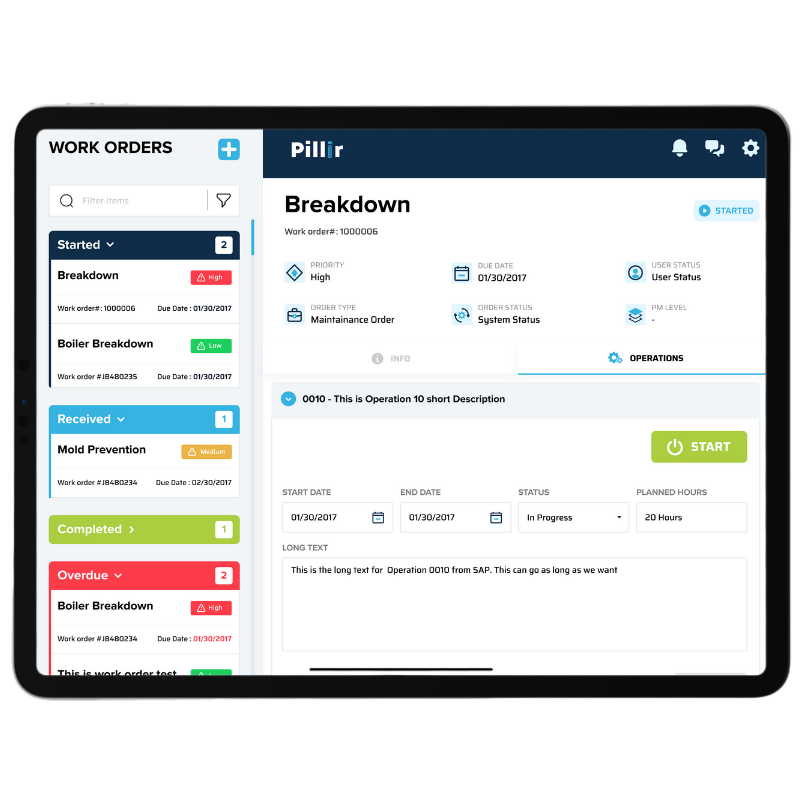Breaking projects down into bite-size pieces is a more efficient and streamlined way to successfully complete a project. Instead of producing the end result of a project in one go, doing it bit by bit increases reliability of the software in the long run. This is what agile business processes do for SAP.
In this blog, we’ll outline the value of agile business processes for SAP ERP, common issues with SAP ERP, best practices for developing agile business processes, and how EdgeReady Cloud can help.
The Value of Agile Business Processes
Before explaining what agile business processes are, we’ll define the term in increments:
- What is agile? In literal terms, agile refers to a project management concept characterized by building out products that customers want, using modified cycles of work that allow for streamlined production and constant revision if needed.
- What are business processes? Business processes are a set of activities, inputs, and outputs that achieve a business goal in tandem.
So, together, agile business processes are a flexible project management technique in which changes can easily be made on the fly. They originated as a result of trying to find an alternative to manual, document-driven, heavyweight software development processes. EdgeReady Cloud is an example of a rapid application development platform that supports agile business processes by offering customized, automated workflows that reflect agile best practices, allowing your team to produce successful apps. (Read more about the custom business process in SAP.)
The value of agile business processes are evident in their ability to take tedious, manual processes and transform them into more succinct, automated workflows.
Here are more benefits of agile business processes for SAP ERP:
- Faster Results: Implementation of agile business processes begins with a sound foundation, based on standard SAP software. In what has been referred to as “sprints,” the implementation team produces new functionalities continually. This is valuable because the product is able to deliver profit instantaneously.
- Improved Visibility and Coordination: In what are called “scrum meetings,” the implementation team meets daily to stay updated with the happenings of the project in order to follow it closely. According to Hex Aware, checkpoints along the way also guarantee that the SAP system meets your requirements. After each “sprint” and the software it delivers, the progress that has been made becomes clear as well as what work still needs to be accomplished. This sets up the project for success and problems are identified early on.
- Flexibility: Unlike other business processes, agile supports flexibility in a project so you can adjust to your needs. This approach gives wiggle room to react accordingly to changes that may come up.
Issues with SAP and How Agile Business Processes Can Help
For SAP ERP customers, the road to implementation is a long and winding journey. Along this journey, business needs and requirements change overtime, so it’s imperative that an SAP ERP system is also configured to match these needs. With agile business processes, changes can be made when necessary. Below we outline common issues with SAP and how agile business processes can help to correct those issues.
Configuration
The Problem: When an SAP ERP system is originally implemented, it’s set up to meet your business needs at that particular moment in time. The issue here arises when other business systems or applications implemented after SAP have been configured differently. In this case, the logic in the other systems can either be rebuilt to match the SAP data, taking up valuable time and money, or reconfiguring can be skipped, risking inconsistencies between ERP data and other data.
Agile Solution: Agile development helps correct this issue by implementing SAP in bite-size pieces, allowing for changes to be made to match your other systems or applications. This is impactful to the success of your business, because the agile business processes make sure that your SAP system is in line with the current requirements of your business, eradicating any risk for inconsistencies in data across systems.
Rigid Basis for Design
The Problem: When implementing SAP, it’s required to define an “SAP Blueprint,” as explained by SAP’s Activate methodology. This creates very rigid rules and makes it difficult to make changes to your product. It also makes it difficult to add in new functionalities along the way during implementation, which can negatively impact your product overtime.
Agile Solution: With Agile business processes for SAP, your implementation team is able to enjoy flexibility during the implementation process. Agile is based on the assumption that needs for a project will change over time, allowing for these changes to be made on the fly, which is why agile SAP ERP is coveted.
Five Best Practices for Developing Agile Business Processes
So, what are some best practices for actually developing agile business processes for your company moving forward and why are they better than traditional business development models?
- A Team as a Unit: Agile business processes work best if entire teams across a corporation work as a tightly knit unit. This includes teams such as project management, developers, and quality assurance.
- Daily Meetings: To make sure the development of an implementation is well-structured, it’s important to have daily meetings with the implementation team to go over that day’s tasks and deliverables.
- Sprints: Deliveries for agile business processes are typically short-term and commonly referred to as sprints. This means a project’s requirements are well defined at the beginning and are used to define the project itself. Afterwards, the sprints are outlined and sorted into their own list of requirements.
- Inspection and Adaptation: Continually inspecting and adapting a project at the end of each sprint is one of the most crucial parts of agile business processes. The team should congregate and inspect its own best practices and decide how to adapt to any changes necessary.
- Communication: Having strong communication amongst a team is key for the success of a project. With good communication, team members are able to share honest feedback and suggestions that affect how a product is structured and implemented.
EdgeReady Cloud and Agile Business Processes
EdgeReady Cloud is a low code, rapid application development platform that allows you to support agile workflows by creating customized applications for SAP ERP with little-to-no coding.
So, how does this work exactly? EdgeReady Cloud offers drag-n-drop interfaces to offer the ability to build applications rapidly, allowing you to increase speed to market. This approach to application development supports agile business processes because it allows for a more streamlined process to be followed, and also enables data accuracy anytime and anywhere by functioning both online and offline. Additionally, EdgeReady Cloud integrates with any ERP system, including SAP, making the implementation and integration process faster and efficient.
Learn how to build agile business processes and create custom applications to modernize your workflows. Save on cost, time, and resources with EdgeReady Cloud - an efficient and effective way to create and implement agile business processes for SAP. Receive a free trial of EdgeReady Cloud today and build unlimited apps at zero cost - contact our team to learn more.





 Back
Back/Logo%20-%20black%20text%20blue%20pillar%20(large)-1.jpg)

